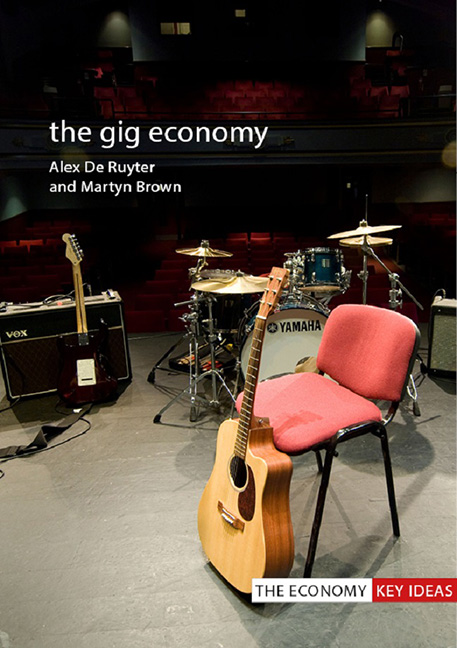2 - Theorizing the gig economy
Published online by Cambridge University Press: 09 August 2023
Summary
The previous chapter has highlighted the origin and context of work associated with the gig economy. Apparent is that for the majority of the age of capitalism, work has been associated with commodification of labour. In this sense, the shift to the cities with industrialization in Europe was characterized by a breakdown of the traditional hierarchical relationships between landowners and peasants associated with feudalism. Such work relationships featured some degree of reciprocity and long-term expectations between the different social classes – although, unequal and often violent, as they were. In this sense, as Thomas Hobbes wrote in Leviathan in 1651 (Hobbes 2008) life was “nasty, brutish and short”. However, industrialization saw the emergence of an urban proletariat in work characterized by alienation and exploitation (Thompson 1963). Work in the eighteenth and early nineteenth centuries was characterized by long hours, low wages and relative ease of hiring and firing. Hence, work was highly precarious, and workers could be easily dismissed and replaced, with the presence of a “reserve army” of the unemployed serving to moderate worker demands (Marx 1887/2018).
However, the increasing organization of the working class and rising affluence throughout the course of the late nineteenth century – and hence the emergence of social democratic parties in Europe and its colonial offshoots – served to usher in policies that promoted increasing regulation and welfare at work. The earliest regulations on the employment relationship in industrialized economies consisted of limitations on the working day and eliminating the “worst forms” of labour, such as child labour and women in certain occupations, such as coal mining (De Ruyter et al. 2011). However, by the early twentieth century, in the UK for example, the Liberal government in 1906 had recognized the “right to strike” and introduced unemployment insurance and old age pensions (Birch 1998). This was also accompanied by shifts in production techniques that recognized that well-paid workers with some modicum of job security were more productive workers; most notably epitomized in Henry Ford’s pioneering of the automotive assembly line and paying his workers good wages.
It was in this period that the emergence of a more affluent white, male working class began to take shape.
- Type
- Chapter
- Information
- The Gig Economy , pp. 11 - 32Publisher: Agenda PublishingPrint publication year: 2019



